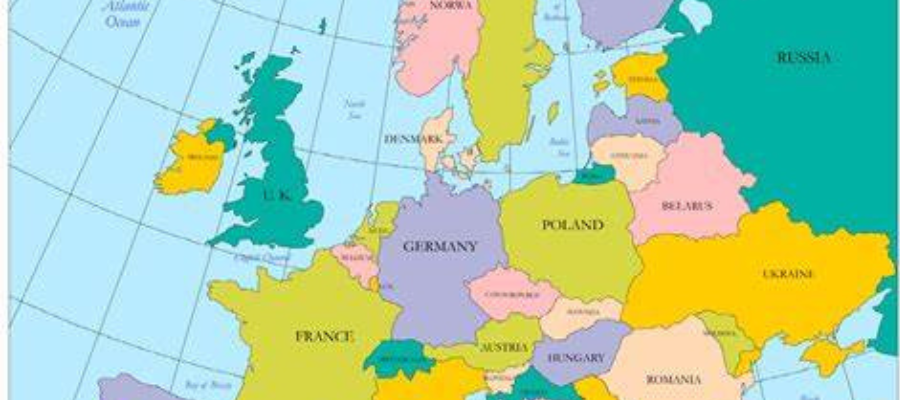Find PhD Opportunities with International Funding


Getting a fully funded PhD opportunity overseas is like looking for a needle in a haystack. It is a complicated process, extremely competitive, and country, university, and field-specific. But for most would-be researchers, overseas funding is what makes a doctoral career affordable and world-class.
The good news? There are funded PhD positions—and lots of them. You just need to have the right approach to find and apply for them effectively.
In this blog, we’ll guide you through finding international PhD funding opportunities, knowing the types of available funding, and applying with confidence.
1. Familiarize Yourself with the Types of PhD Funding
First, let’s get an overview of the types of funding available to PhD students. Most international PhD scholarships are funded by one or a mix of the following:
Fully Funded Scholarships
They pay tuition fees and offer a monthly stipend for living expenses. Governments, universities, and international foundations usually award them.
Examples:
- Commonwealth PhD Scholarships (UK)
- DAAD Scholarships (Germany)
- Erasmus Mundus Joint Doctorates (EU)
Research Assistantships (RA)
These are provided by funded project professors or departments. You’ll work on research tied to a grant, and your tuition and stipend are paid in exchange.
Teaching Assistantships (TA)
You are provided with funding as a trade for teaching undergraduate courses or labs. This is prevalent in the US and Canada.
External Fellowships
Numerous organizations, foundations, and government agencies provide competitive fellowships available to international students.
Examples:
- Fulbright Program
- Gates Cambridge Scholarship
- Marie Skłodowska-Curie Actions (MSCA)
Understanding what type of funding you’re eligible for will help narrow your search and tailor your application approach.
2. Start with Government-Funded Programs
Government scholarships are often the most comprehensive and reliable sources of PhD funding for international students. These programs aim to promote international research collaboration, and they usually come with additional perks such as visa support and networking opportunities.
Here are some top destinations and their government-funded programs:
- Germany: DAAD (German Academic Exchange Service) has hundreds of fully funded PhD places.
- UK: Commonwealth Scholarships, Chevening Scholarships, and UKRI (UK Research and Innovation) Doctoral Training Partnerships.
- USA: Fulbright Foreign Student Program and NSF-funded PhDs (universities-funded).
- Canada: Vanier Canada Graduate Scholarships.
- Australia: RTP (Research Training Program) Scholarships, Australian Government-funded.
Pro tip: Always scan the official embassy websites of your target country. They usually post government-funded PhD scholarships available to your nationality.
3. Look on University Sites and PhD Websites
Most fully funded PhD awards are posted directly by research institutes or universities. These do not always get widely promoted through generic search engines, so it makes sense to go to the source first.
Begin with universities that are known to be strong in your field of study and search their:
- Graduate school or doctoral program pages
- Departmental websites
- Job and scholarship boards
Also, employ dedicated PhD portals, which list regularly updated postings:
- FindAPhD.com (UK, Europe, Global)
- EURAXESS (EU Research Portal)
- PhDportal.com (Netherlands-based, global listings)
- Academic Positions (Global)
- Times Higher Education jobs and Nature Careers
Restrict your search using keywords such as “fully funded,” “scholarship available,” or “stipend included” to only show financially supported positions.
4. Network with Researchers and Professors
Most PhD positions—particularly those linked to grant-funded research—are never made public. Professors already have the funding arranged and are merely seeking the best candidate. That’s why networking forms an integral part of your PhD search.
Here’s how to develop helpful academic connections:
- Send potential supervisors an email with a personalized message stating your interest in research.
- Include your CV, academic transcripts, and a brief idea for your research (if applicable).
- Attend academic conferences, even virtually, to meet researchers and learn about upcoming projects.
- Engage on platforms like ResearchGate or LinkedIn where professors sometimes post opportunities.
When reaching out, make sure your communication is respectful, concise, and well-researched. Show that you’ve read their recent work and explain how your interests align.
5. Apply for International Research Programs and Networks
Certain PhD programs belong to wider international networks or training groups. These programs are intended to facilitate collaborative research between institutions and nations—and they usually involve coordinated funding.
Examples are:
- Marie Skłodowska-Curie Doctoral Networks (Europe-wide)
- Erasmus Mundus Joint Doctorates (multi-country programs)
- International Max Planck Research Schools (IMPRS) in Germany
- International Graduate Programs in Japan, Korea, and Singapore
- Cotutelle PhD programs, where you receive a dual degree from two institutions
These schemes not only offer the money but also enable you to research in several countries, work across borders, and develop a worldwide network.
6. Create a Successful Application
Having shortlisted funding opportunities, the second step is writing a good application. This will probably cover:
- A research proposal or statement of purpose
- Your academic CV
- Letters of recommendation
- Academic transcripts
- Evidence of language ability (e.g., IELTS, TOEFL)
Following are tips to increase your chances:
- Take the time to customize your application for every opportunity. Indicate how your objectives match the institution or supervisor.
- Be explicit and concise about your research objectives, but allow for some flexibility.
- Emphasize your academic record, research background, and publications, if any.
- Don’t wait until the last minute. Begin preparing well ahead of deadlines.
There are some programs that will also include interviews or presentations—so prepare to present your proposal and prove your expertise.
7. Be Aware of Hidden Fees and Conditions
Even with “fully funded” opportunities, don’t neglect to read the fine print. Some scholarships may pay only tuition, and you’ll have to pay for living expenses. Others may have restrictions on how many hours you can work, or prevent you from taking a part-time job.
As you consider possibilities, ask:
- What specifically is covered under the funding?
- Does health insurance come with it?
- Are there other administrative or visa fees?
- Do you have the ability to renew the funding yearly?
Knowing the financial situation will enable you to budget and not be surprised.
It does take work, dedication, and planning to find PhD opportunities with global funding. But it’s totally doable—and many students from all over the world do it with success year after year. The secret is to plan ahead, be proactive, and cast your net far and wide.
No matter what your dream is to pursue cancer biology in Germany, environmental policy in Canada, or machine learning in Singapore, funded programs exist for you to apply to.
Be ambitious when approaching, be thorough in your preparation, and most importantly, have faith in the worth you are to bring as a budding researcher.
You’re not seeking funding. You’re laying the groundwork for your academic and professional future.
Call Aara Consultancy to help you!
We provide 360° Solution for your Education Needs. Contact us






